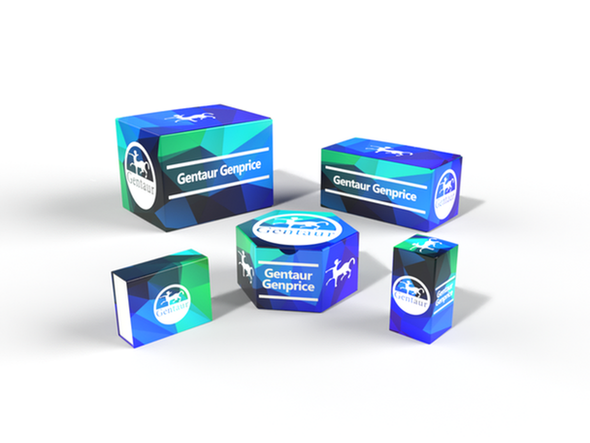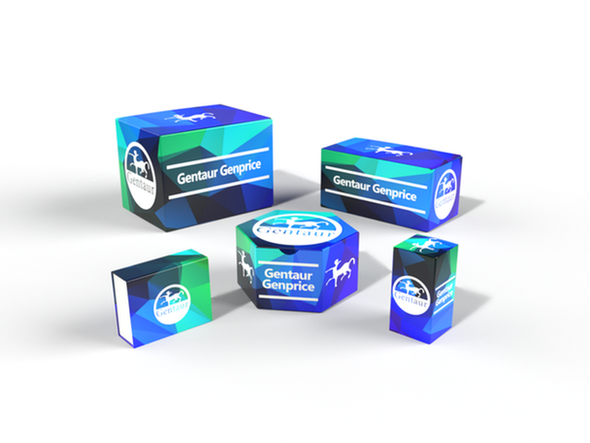356
EpiNext cTIP (CUT&Tag In-Place) -Sequencing Kit | P-2032
- SKU:
- 356-P-2032-GEN
- Availability:
- Usually shipped in 5 working days
Description
The EpiNext™ cTIP (CUT&Tag In-Place)-Sequencing Kit is a complete set of reagents required for carrying out a successful cTIP-Seq starting from mammalian cells. The kit is designed to enrich a protein (histone or strong binding transcription factor)- specific DNA complex from low input cells/chromatin and to prepare a library for next-generation sequencing using Illumina platforms such as Illumina Genome Analyzer II, HiSeq, and MiSeq systems. The innovative working principle, optimized protocol, and components of the kit allow for the capture of targeted protein/DNA complexes with minimized non-specific background levels and for the construction of both non-barcoded (singleplexed) and barcoded (multiplexed) libraries quickly in order to map target protein-DNA interaction regions with less bias and at a high resolution. The kit has the following advantages and features:
- High enrichment: Uses a unique nucleic acid cleavage enzyme mix, which has low sequence bias, to simultaneously fragment chromatin and cleave/remove any DNA sequences in both ends of the target protein/DNA complex without affecting DNA occupied by the target protein. Thus, the true target protein-enriched regions can be reliably identified and high-resolution mapping can be achieved.
- Low input materials: Robust sonication-free fragmentation, unbound DNA cleavage, and immunocapture are all processed in the same single-tube with on-beads ligation. This method allows for using in both cells and tissues and allows for maximal degradation protection of the target protein with minimal sample loss. As a result, the input cell amount can be as few as 500 cells or chromatin amount can be as low as 50 ng.
- In place tagging: The on-beads ligation (in place) of DNA adapters to chromatin prior to DNA purification results in an increase in DNA fragment size, allowing very short fragments (ex: < 70 bps) bound to transcription factors (TF) to be purified for library construction.
- Minimal background: Cleavage of unbound DNA sequences in the two (2) end of the target protein/DNA complex in situ enables the minimized immunocapture/sequencing background, allowing data analysis with <10 million reads.
- Fast, streamlined procedure: The procedure from cells to library DNA is less than 5 hours.
- Highly convenient: The kit contains all required components for each step of the CUT&Tag in-place sequencing, which are sufficient for both protein/DNA capture and captured DNA library preparation, thereby allowing the cTIP (CUT&Tag In-Place)-Sequencing Kit to be the most convenient with reliable and consistent results.
Background Information
Enrichment of histone or transcription factor (TF)-complexed DNA in vivo followed by next-generation sequencing offers an advantageous tool for studying genome-wide protein-DNA interactions. It allows for the analysis of a specific protein binding to DNA sequences in living cells. Such analysis requires that the method reliably identify true target protein-enriched regions, particularly from limited cell samples. These samples could include rare cell populations isolated from tissues, specific cells sorted from entire cell populations, and primary cultured sub-population cells such as embryonic cells. In addition, the method should ensure that enriched DNA contains minimal background and that the mapping of protein-DNA binding regions is with minimal bias and at high resolution. A major method used for a long time to achieve this goal is chromatin immunoprecipitation followed by sequencing (ChIP-Seq). However, the major limitation for ChIP is that it needs 1) a large amount of input material, cells or tissue, to produce a strong enough signal over background noise; and 2) cross-linking during an initial fixation step. There are several advanced methods available for ChIP-Seq with reduced cell numbers or increased resolution. These methods include ChIP-exo, ChIPmentation. ChIP-exo provides high-resolution mapping, but is time-consuming and requires an ample supply of input cells. While ChIPmentation uses transposase and sequencing-compatible adaptors to enable the integration of ligation during the ChIP process, it follows a traditionally slow (2 day) ChIP procedure and cannot achieve high-resolution mapping.
Principle & Procedure
The kit contains all necessary reagents required for carrying out a successful cTIP-Seq starting from mammalian cells. In the reaction, nuclei is isolated from cells. The target protein-DNA complex is bound/captured with the CHIP-grade antibody of interest. With the use of a unique nucleic acid cleavage enzyme mix, chromatin is fragmented, and DNA sequences in both ends of the target protein/DNA complex are cleaved/removed. All the while, the DNA sequence occupied by the target protein is unaffected. The adaptors are ligated to the target protein-bound DNA fragments on the beads. The ligated DNA is then released, purified, and amplified with a high-fidelity PCR mix for library DNA construction. DNA is then cleaned, released, and eluted. Included in the kit are a positive control antibody (anti-H3K9me3), a negative control non-immune IgG, and control chromatin, which can be used to demonstrate the efficacy of the kit and performance at the PCR/bioanalyzer step.
Starting Materials
Starting materials can include various mammalian cell samples such as cultured cells from a flask or plate, primary cells, or rare cell populations isolated from blood, body fluid, and fresh/frozen tissues, specific cells sorted from entire cell populations, and embryonic cells, etc.






